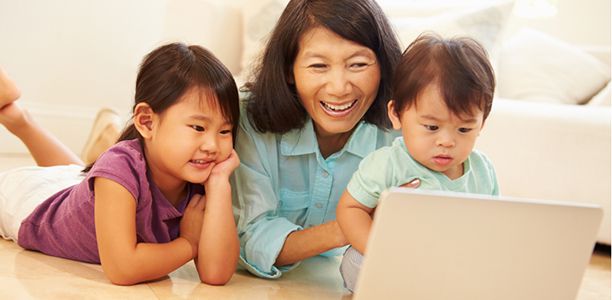Far from bemoaning new technologies, a new report has found that Australian families are embracing the digital world and even using it to improve their families’ wellbeing and their relationships.
The research—undertaken by the Young and Well Cooperative Research Centre and Western
Sydney University, with support from Google Australia—notes that in contrast to the widely held
attitudes of the nineties where internet technology would create a ‘doomsday scenario’,
increased online interaction between parent and child can, in fact, cement the family unit.
The report shows that digital media has become an increasingly normal and embedded part of
everyday life, and that families are finding unique ways to use digital tools and devices—extending
our social world with many new opportunities.
CEO of the Young and Well CRC, Associate Professor Jane Burns, said: “Australian families are developing sophisticated and critical understandings of the risks and opportunities associated with the digital world, and are enthusiastically integrating it into their lives.”
Australian families understand that technology and social media now play an important part in both our social and family relationships, and can help to improve them. The report shows that different kinds of families are working together to creatively adapt to deal with any digital challenges they encounter.
“People are using the internet to improve their families’ wellbeing, for information on parenting, for social and political knowledge and activism, and to follow cultural and artistic interests,” said Associate Professor Amanda Third, from Western Sydney University and Research Program Leader at the Young and Well CRC.
“Families increasingly understand that navigating risk is part of the digital age, and that parents
and children need to work together to minimise those risks through digital literacy and shared
learning – they understand that blocking content or not allowing children online is not the
solution. Children themselves are an important resource for us all to learn from.”
There are also a number of Google tools like SafeSearch, Safety Mode in YouTube, two-factor
authentication and the YouTube for Kids app that can be set up for kids to help them stay safe
online. In particular, the YouTube Kids app offers family-focused content with a number of
parental controls – including a timer, the ability to turn off search, and more – to provide a safer
version of YouTube for younger children.
Samantha Yorke, Public Policy and Government Relations Counsel, Google Australia said: “The
web is a great place for families to learn, be creative and stay connected. It’s important that we
understand how parents and children are using digital technologies to ensure that Australian
families are smart, confident and capable digital citizens who understand how to use technology
responsibly.”
The study shows that older generations are also embracing technology – seeing the value it
provides in creating further social connections in maintaining relationships with the young
people in their lives, and opportunities for intergenerational learning.
The findings have been released just in time for Safer Internet Day 2016. With the theme ‘Play your
part for a better internet’, Safer Internet Day encourages safe and positive use of the internet and
digital technologies, encouraging us to think about safety online as a form of resilience, and
recognise that social interactions on- and offline help shape our responses in the digital world.
(Source: Western Sydney University)



 (2 votes, average: 4.00 out of 5)
(2 votes, average: 4.00 out of 5) 






